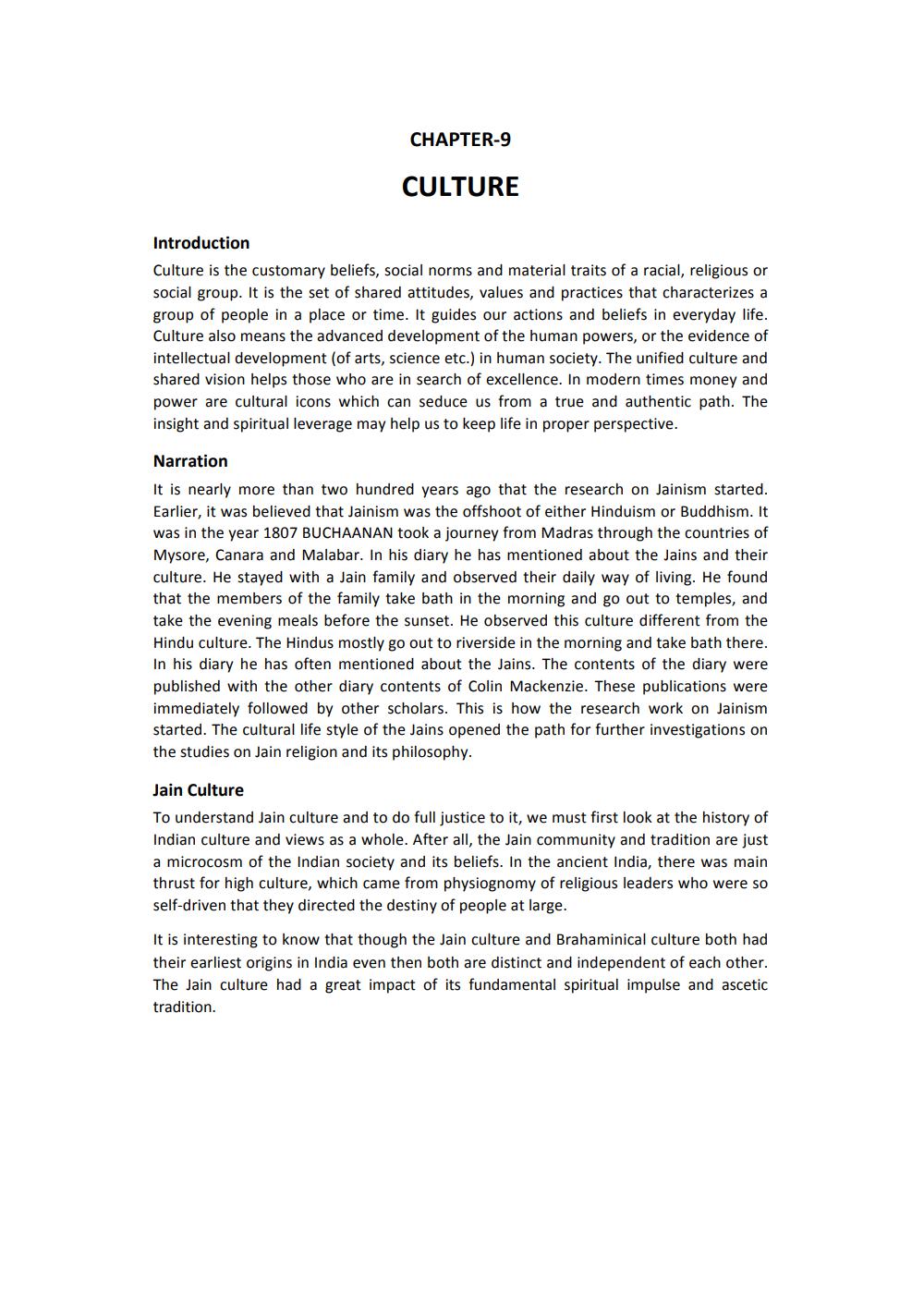________________
CHAPTER-9
CULTURE
Introduction Culture is the customary beliefs, social norms and material traits of a racial, religious or social group. It is the set of shared attitudes, values and practices that characterizes a group of people in a place or time. It guides our actions and beliefs in everyday life. Culture also means the advanced development of the human powers, or the evidence of intellectual development (of arts, science etc.) in human society. The unified culture and shared vision helps those who are in search of excellence. In modern times money and power are cultural icons which can seduce us from a true and authentic path. The insight and spiritual leverage may help us to keep life in proper perspective.
Narration It is nearly more than two hundred years ago that the research on Jainism started. Earlier, it was believed that Jainism was the offshoot of either Hinduism or Buddhism. It was in the year 1807 BUCHAANAN took a journey from Madras through the countries of Mysore, Canara and Malabar. In his diary he has mentioned about the Jains and their culture. He stayed with a Jain family and observed their daily way of living. He found that the members of the family take bath in the morning and go out to temples, and take the evening meals before the sunset. He observed this culture different from the Hindu culture. The Hindus mostly go out to riverside in the morning and take bath there. In his diary he has often mentioned about the Jains. The contents of the diary were published with the other diary contents of Colin Mackenzie. These publications were immediately followed by other scholars. This is how the research work on Jainism started. The cultural life style of the Jains opened the path for further investigations on the studies on Jain religion and its philosophy.
Jain Culture To understand Jain culture and to do full justice to it, we must first look at the history of Indian culture and views as a whole. After all, the Jain community and tradition are just a microcosm of the Indian society and its beliefs. In the ancient India, there was main thrust for high culture, which came from physiognomy of religious leaders who were so self-driven that they directed the destiny of people at large.
It is interesting to know that though the Jain culture and Brahaminical culture both had their earliest origins in India even then both are distinct and independent of each other. The Jain culture had a great impact of its fundamental spiritual impulse and ascetic tradition.




